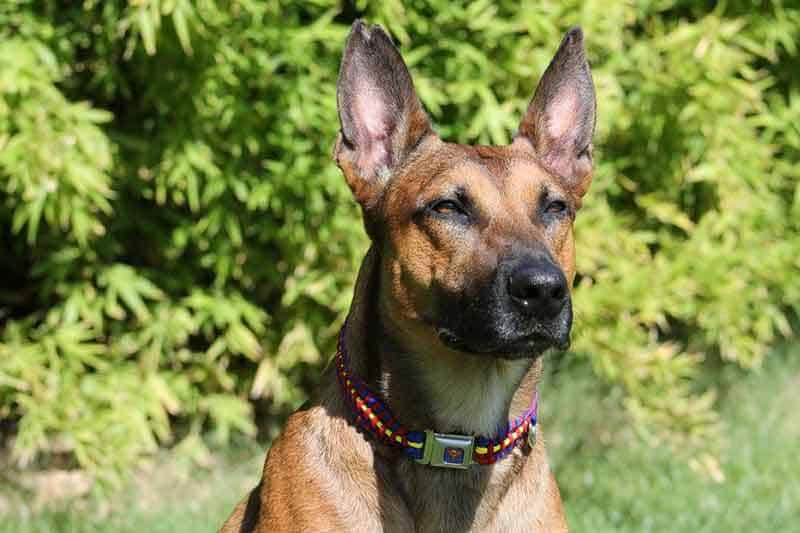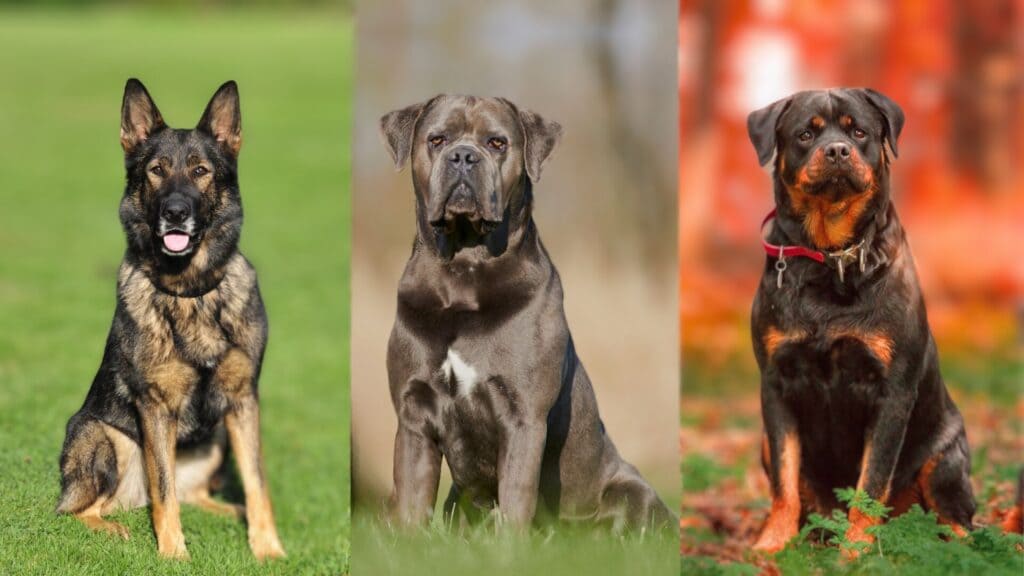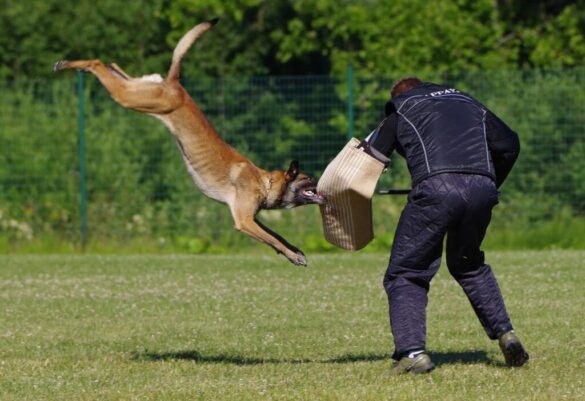Let’s accept the fact that there is a crazy world out there with a number of safety concerns for each individual. Folks tend to opt for different ways to protect themselves and their families. From hiring bodyguards to installing CCTVs in homes and getting a dog, all serve as ways of protection. However, getting a dog is one viable option. Now, which dog to choose? There are certain protection dog breeds that are specifically designed to provide you with safety. Just like guard dog training, protection dog training is also important so that they can provide protection to you and your family. Protection dogs are vigilant guardians of your home.

Understanding Protection Dog Training
A specific program called protection dog training aims to develop a dog’s natural instincts for protection work. It is held at a training facility and includes bite work, scent work, and obedience. Dogs are able to distinguish between different types of threats and respond appropriately, providing personal protection. This intense training program develops the dog’s abilities and instills discipline, preparing them to be watchful protectors. However, this type of training builds a solid relationship between the dog and the handler by going above and beyond basic obedience. When given the right direction, these dogs develop into trustworthy companions who provide unmatched security and comfort.

Basic Difference between Protection Dogs and Guard Dogs
Basically, the guard dogs and protection dogs both provide protection. However, guard dogs and protection dogs have different responsibilities to do while being trained for security. Usually, without direct human involvement, a guard dog stays on location to frighten and bark at potential intruders. They work well for properties that need round-the-clock security. In comparison, a personal protection dog undergoes an extensive training program customized for real-life situations, focusing on obedience, scent work, and bite work. These canines go with people, offering direct executive protection. Moreover, personal protection dogs provide a better level of security in stressful situations because they have a strong prey drive and respond to dangers on command. Additionally, although guard dogs are free to operate on their own, personal protection dogs have a strong relationship with their handlers, which promotes smooth cooperation and improved safety protocols.

Professional Protection Dog Training: Secure Yourself
In professional protection dog training, trainers can transform a regular dog into a vigilant protector capable of detecting dangers and responding to dangerous circumstances accurately by guiding them through a series of steps. If you are wondering how to train your dog to protect, this guide will help you a lot. This is an in-depth explanation of the technique:
1. Temperament Assessment in Protection Dog Training
The first phase in personal protection dog training is temperament evaluation. Based on temperament, desire, and intellect, trainers determine whether a dog is a good candidate for this type of training. This phase also works on different breeds of dogs, such as German shepherds and others. Furthermore, the trainers evaluate which breed is best for protection. This stage ensures that only dogs with the appropriate qualities are trained. Moreover, their natural instincts are also evaluated.
2. Obedience in Protection Dog Training
The next step in dog protection training is obedience. The training facility provides obedience training, which is the cornerstone of each type of training. To learn basic commands like sit, stay, heel, and recall, dogs go through extensive obedience training. During protective work, this basis is essential for efficient communication and control. Lastly, trainers will fully train your dogs in obedience after a certain amount of time and regular practice.
3. Protection Dog Training through Teaching Scent Work
Dogs are trained to identify smells that are linked to trespassers or dangerous substances. Protection training for dogs includes scent work as one of the main phases. Moreover, the scent work strengthens the dog’s innate sense of smell and increases its capacity to identify possible dangers.
4. Protection Dog Training with Bite Work
In the Bite Work phase, controlled aggression and bite inhibition are taught. Dogs are taught to distinguish between friends and enemies and will only confront threats when given the order to do so. Strict supervision is used during biting operations to guarantee the security of the dog and the handler.
What Age to Start Dog Protection Training?
“Ideally, 10-12 months of age is perfect for professional personal dog training. It is because your furry fellows get mentally mature by that age.”
5. Scenario-Based Protection Dog Training
Protective dog training entails imitating real-life situations. Your furry fellows undergo scenario-based training. This could be defending against mock attacks, guarding a certain area, or going somewhere with their handler. Furthermore, your dogs trained with scenario-based training are better equipped to handle a range of security situations.
6. Handler Training
The next phase in protective training for dogs includes handler training, too. The training program focuses on owner training to maintain a healthy relationship. Handlers are also provided with training on how to work together with their security dog. They pick up handling etiquette, commands, and how to reinforce the dog’s training in real-world scenarios.
7. Ongoing Assessment and Improvement in Protection Dog Training
The last step in dog training for protection includes continued evaluation and practice. The process of training is never-ending. To make sure the dog continues to be effective in their duty as a protection dog, trainers constantly assess the dog’s development and improve their skills. You can opt for home train for your protection dogs but it’s always nice to get some professional help. Moreover, the cost of protecting dogs varies from breed to breed and region to region. Also, different training facilities charge different amounts, so if you are wondering how much protection dog training costs, conduct some research.
Professional training for protection dogs makes sure that canines are ready to play the part of devoted guardians, giving their owners more security and peace of mind by adhering to certain guidelines.
If you want to know more about protection dog training, check out this blog.

Dog Breeds for Protection Dog Training
For protection dog training, a number of dog breeds are often selected because of their innate qualities, temperament, intellect, and physical traits. The following are a few of the most well-liked breeds for this type of training:
1. German Shepherd
German Shepherds are excellent at protecting people and are well-known for their loyalty, intelligence, and adaptability.
2. Belgian Malinois
Famous for their intellect, agility, and work ethic, Belgian Malinois are comparable to German Shepherds in this regard. Because of their strong motivation and constant focus, they are frequently chosen, which makes them great candidates for protection training.
3. Doberman Pinscher
Dobermans are courageous, strong, and brave canines with a keen sense of defense.
4. Rottweiler
With a natural instinct to defend and guard their territory, Rottweilers are self-assured, devoted, and protective canines.
5. Dutch Shepherd
Excellent in obedience and protective work, Dutch Shepherds are perceptive, adaptable, and extremely trainable canines. They are renowned for their tremendous work ethic, dexterity, and acute sense of smell.
6. Boxer
With an innate protective instinct, boxers are brave, energetic, and devoted canines. They are good candidates for protective training because of their intellect, fun, and athleticism.
7. Giant Schnauzer
With a high prey drive, giant schnauzers are strong, clever, and protective dogs. They make excellent guard dogs because of their track record of loyalty, obedience, and territoriality.
8. Pit Bull Terrier
Pit bulls are devoted, courageous, and strong canines with a built-in urge for defense.
Even though these breeds are frequently used in this type of dog training, it’s important to keep in mind that a dog’s temperament and training are important factors in evaluating whether or not they are suitable for a security job.
Conclusion
Summing up, this article’s guide covered professional protection dog training in detail to protect you and your family. Moreover, the general differences between a guard dog and a protection dog are also mentioned. So, if you are opting to get a protection dog, consider their professional training now by visiting the nearest training facility.
Protection Canines, Your Ultimate Savior!

